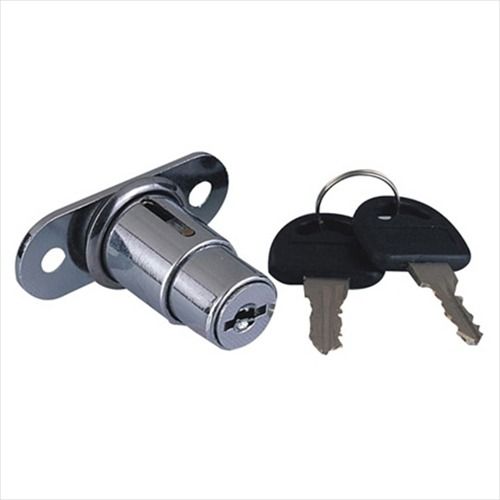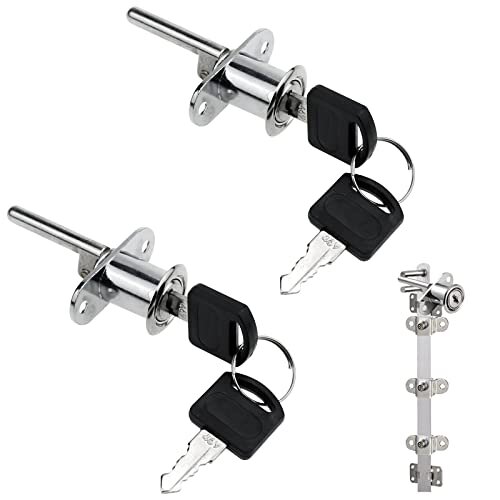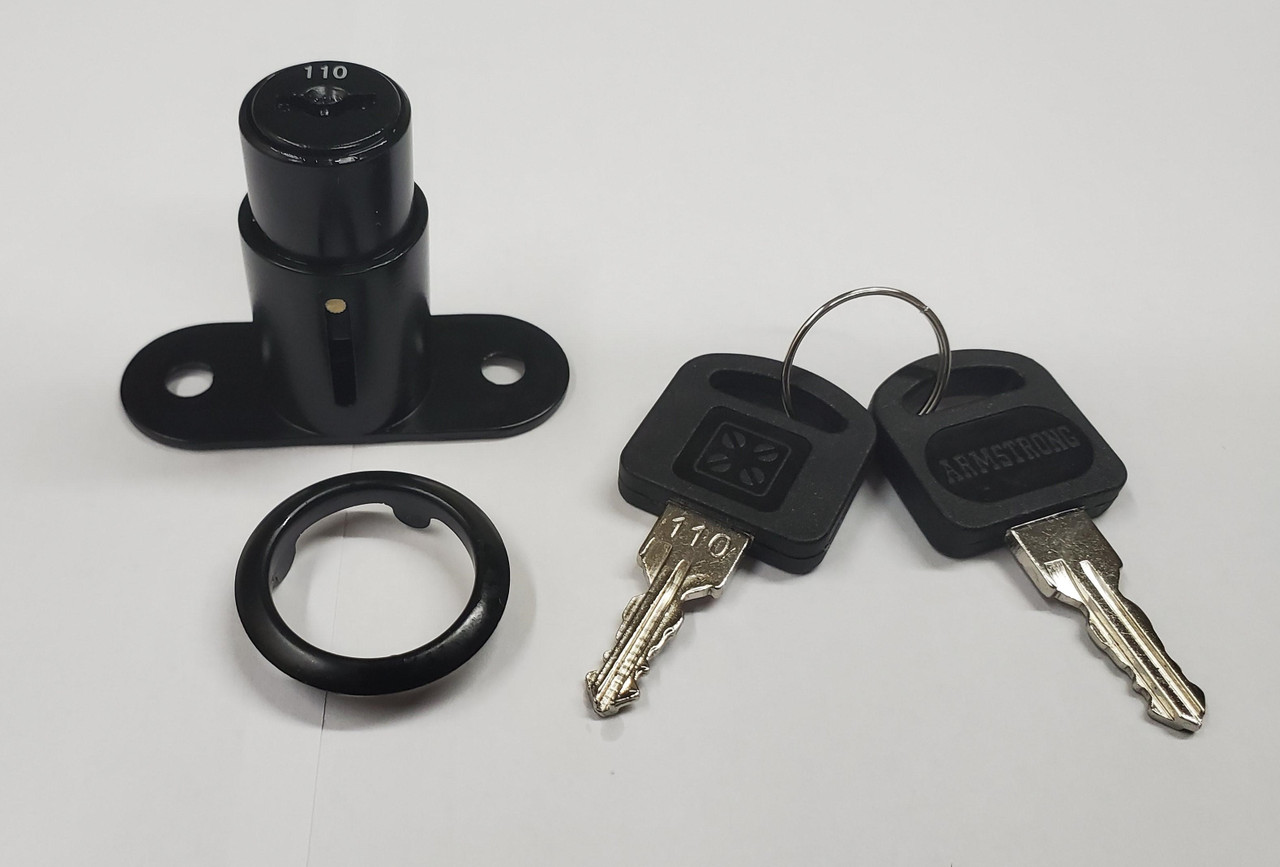A plunger lock, a common sight, works simply. It’s known as a pin tumbler lock. When you turn the right key, it precisely aligns the pins inside the cylinder. This alignment at the shear line lets the cylinder rotate, unlocking the door or mechanism. Understanding this process clarifies how plunger locks work, making them a reliable security choice.
What is a plunger lock?
A plunger lock, sometimes called a pin tumbler lock, is a common and simple type of lock you’ve likely encountered in everyday life. It consists of a cylinder with a series of pins or tumblers of different lengths inside. When you insert and turn the correct key, it aligns these pins perfectly, enabling the cylinder to rotate and unlock the door or mechanism.
These locks are widely used in homes, offices, and various applications due to their reliability and ease of use. They come in different sizes and designs, making them versatile for various security needs. Plunger locks are also found in cabinets, drawers, and even some padlocks.

How does a plunger lock work?
Like when we cus wire we should know how a wire cut and strip machine work. Also, A plunger lock, commonly known as a pin tumbler lock, is a straightforward and effective security device used in various applications. Let’s break down how it works:
Components: A plunger lock comprises a cylindrical housing with a keyway and a set of pins or tumblers inside. These pins have varying lengths and position vertically within the cylinder.
Locked State: In its locked state, the upper ends of the pins protrude into both the keyway and the housing, preventing the cylinder from rotating.
Key Insertion: To unlock the plunger lock, insert the correct key into the keyway. The key is specially designed with ridges and valleys that correspond to the arrangement of the pins within the cylinder.
Turning the Key: When you turn the key, the ridges and valleys push the pins either up or down. The key’s unique pattern precisely aligns the pins.
Alignment: When all the pins align perfectly along the shear line, which is the gap between the cylinder and the housing, it allows the cylinder to rotate freely.
Unlocking: As the cylinder rotates, it disengages the bolt or latch mechanism that holds the door or enclosure shut, unlocking the lock.
The brilliance of this design is its simplicity and effectiveness. Without the correct key, the pins won’t align as needed, preventing the cylinder from turning and keeping the lock securely closed. It’s this fundamental principle of aligning pins along the shear line that makes plunger locks highly secure.
When to use a plunger lock?
Knowing when to use a plunger lock can enhance your security and organization. Here’s a breakdown of situations where plunger locks are highly suitable:
Home Security: Plunger locks are ideal for exterior doors at home. They provide a robust defense against unauthorized entry and are easy to operate, making them a staple for residential security. You’ll commonly find them on front doors, back doors, and even garage doors.
Office and Workplace: Offices and workplaces often have numerous items and documents that require secure storage. Plunger locks are perfect for this, securing office doors, file cabinets, and desk drawers. They ensure that confidential information and valuable assets remain protected.
Cabinets and Cupboards: In kitchens, bathrooms, and storage areas, plunger locks help maintain safety. They prevent access to potentially dangerous chemicals, sharp objects, and valuable items stored in cabinets and cupboards.
Retail Display Cases: Businesses that rely on displaying valuable merchandise, such as jewelry stores, use plunger locks in display cases. These locks allow customers to view products while deterring theft.
Gym Lockers: Plunger locks are prevalent in gyms and fitness centers, where they secure lockers. This ensures gym-goers can exercise worry-free, knowing their belongings are safe and sound.
Mailboxes: Residential and commercial mailboxes often feature plunger locks. They ensure the privacy and security of your mail by preventing unauthorized access.
File Cabinets: Both in offices and homes, file cabinets store important documents. Plunger locks secure them, maintaining the confidentiality of sensitive information and safeguarding essential records.
Toolboxes: Plunger locks are a go-to choice for securing toolboxes, and protecting valuable tools from theft or misuse.
Furniture: Certain furniture pieces, like secret compartments or storage chests, incorporate plunger locks to keep contents hidden and secure. This is useful for storing valuables or personal items discreetly.
Cameras and Equipment Cases: Photographers and videographers use plunger locks to secure camera and equipment cases. This not only prevents theft but also ensures the safety of expensive gear.
Retail Security Gates: Plunger locks are integral components of security gates in retail stores. They prevent unauthorized entry outside of business hours, adding an extra layer of security to the premises.
Electronics Cabinets: Data centers, server rooms, and facilities housing electronic equipment use plunger locks to safeguard valuable hardware. This ensures the integrity and functionality of critical systems.

What to consider when buying a plunger lock?
When buying a plunger lock, several key considerations will help you make the right choice:
Security Needs: First, assess your security requirements. Determine whether you need a basic lock for low-security areas or a high-security option for more valuable assets.
Application: Think about where you plan to use the lock. Plunger locks are versatile and can secure doors, cabinets, drawers, and more. Choose a lock designed for your specific purpose.
Size and Compatibility: Measure the dimensions of the item or space you want to secure. Ensure the lock’s size and design are compatible with your needs, whether it’s a small drawer or a large door.
Key System: Consider the keying system that suits you best. You can opt for standard keys, a master key system for multiple locks, or keyed-alike locks for convenience in managing multiple locks with a single key.
Material and Durability: Check the lock’s construction material. Stainless steel and brass are popular choices for durability and resistance to corrosion. Ensure the lock can withstand wear and tear in your intended environment.

FAQs
Where can I use plunger locks?
Plunger locks offer versatility and can secure doors, cabinets, drawers, mailboxes, gym lockers, file cabinets, and more. They provide security for various applications in both residential and commercial settings.
Can I rekey a plunger lock if I lose the key?
Yes, you can rekey a plunger lock, but it’s best done by a locksmith or with a rekeying kit if you have the necessary skills. Rekeying allows you to change the lock to work with a new key while keeping the existing hardware.
How do I maintain a plunger lock for long-lasting performance?
To maintain a plunger lock, lubricate it periodically with a lock-specific lubricant. Keep the keyway clean and free of debris. If you encounter any issues, consult a locksmith for professional assistance to prevent damage to the lock.
